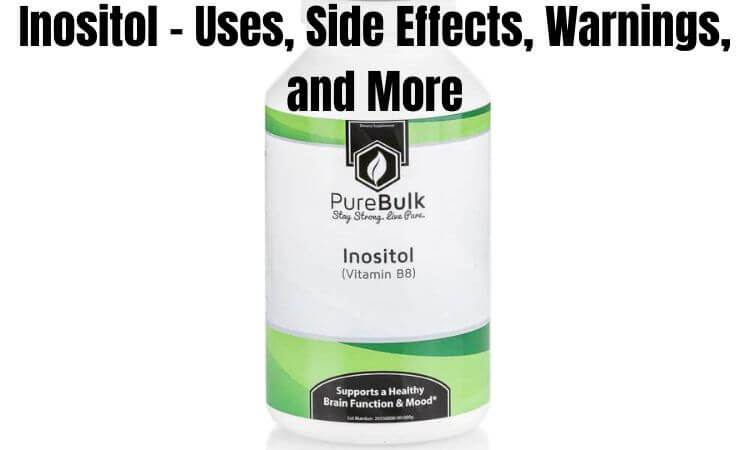Table of Contents
Inositol – Uses, Side Effects, Warnings, and More
inositol pcos,inositol supplement,what is inositol used for,inositol foods,inositol side effects,inositol capsules,inositol weight loss,inositol powder,inositol pcos,what is inositol used for,myo-inositol,inositol foods,inositol capsules,inositol supplement
Overview
Inositol is a sugar that can be produced by the body as well as discovered in many foods. There are nine different manifestations of it. Myo-inositol and D-chiro-inositol are the most frequent supplements.
Inositol may assist mental illnesses such as panic disorder, depression, and obsessive-compulsive disorder by restoring the body’s natural chemical equilibrium and thereby reducing symptoms of these conditions. Additionally, it may assist insulin in functioning more effectively.
People take inositol to treat metabolic syndrome, and polycystic ovarian syndrome (PCOS), and to lessen the likelihood that their babies would be born prematurely. Insomnia, bipolar illness, post-traumatic stress disorder, and many other disorders are treated with it as well, however, the majority of these applications are not supported by solid scientific data.
It is important to differentiate between inositol, inositol nicotinate, and IP-6. These are two entirely different things.
Uses & Effectiveness
Possible Usefulness in Regards to
A cluster of symptoms that raises one’s chances of developing diabetes, cardiovascular disease, and stroke (metabolic syndrome). People who have metabolic syndrome may show improvements in insulin resistance, cholesterol, and triglyceride levels when they take inositol orally, with or without alpha-lipoic acid. This may also result in lower blood pressure.
A hormonal condition that results in the development of cysts and enlarged ovaries (polycystic ovary syndrome or PCOS). People who have PCOS may benefit from taking inositol orally since it lowers their triglyceride levels, lowers their blood pressure, and improves their blood sugar levels as well as their ovulation and conception rates.
A birth that is too early. Those expecting mothers who have a greater risk of developing diabetes during pregnancy may benefit from taking inositol and folic acid orally during pregnancy. This appears to reduce the likelihood of giving birth prematurely.
DO NOT MISS: Propolis – Uses, Side Effects, Warning, and More
It’s Possible That This Won’t Work for
An urgent and life-threatening pulmonary disease (acute respiratory distress syndrome or ARDS). It does not appear that giving myo-inositol intravenously (IV) to premature babies with ARDS is helpful. In point of fact, it might even be detrimental. IV products can only be provided by a healthcare provider.
Anxiety. Consuming inositol through the digestive system does not appear to alleviate the symptoms of anxiety.
Depression. Consuming inositol through the digestive system does not alleviate the symptoms of depression.
Pain in the nerves experienced by diabetics (diabetic neuropathy). Consuming inositol through the digestive system does not appear to alleviate the symptoms of nerve pain brought on by diabetes.
A condition that affects the eyes of premature infants and can lead to blindness (retinopathy of prematurity). It does not appear that giving myo-inositol to premature babies either intravenously or orally will reduce the likelihood that they will develop retinopathy. In point of fact, it might make the chances of dying higher. Only a trained medical professional should administer IV medications.
There is interest in utilizing inositol for a variety of additional applications; however, there is insufficient trustworthy information to determine whether or not this could be beneficial.
Side Effects
When administered orally, inositol is thought to be safe for the vast majority of adults when used for a period of up to ten weeks. It’s possible that some people will experience nausea, flatulence, and diarrhea as a result of this.
There is not enough trustworthy information available to determine whether or not inositol is safe to use topically or what potential adverse effects it may have.
Special Precautions and Warnings
When administered orally, inositol is thought to be safe for the vast majority of adults when used for a period of up to ten weeks. It’s possible that some people will experience nausea, flatulence, and diarrhea as a result of this.
There is not enough trustworthy information available to determine whether or not inositol is safe to use topically or what potential adverse effects it may have. When used in appropriate doses and for short periods of time, inositol may be safe to consume during pregnancy. Daily doses of myo-inositol of up to 4,000 milligrams have been used without adverse effects.
YOU MAY LIKE THIS: Yohimbe – Uses, Side Effects, Warnings, and More
There is not enough trustworthy information available to determine whether or not it is safe to use inositol during breastfeeding at this time. To be on the safe side, you should avoid using it.
When administered orally to children aged 5 to 12 for up to 12 weeks, inositol may pose no threat to their health.
Interactions
Interaction that is Not Overbearing
Take precautions when using these two together.
Diabetes medications, often known as anti-diabetes treatments, can interfere with the effects of inositol.
There is some evidence that inositol can bring down blood sugar levels. If you take diabetes medication, taking inositol at the same time could cause your blood sugar level to drop too low. Keep a tight eye on your blood sugar levels.
Dosing
Inositol is a type of sugar alcohol that can be discovered in a variety of foods, including cereals, corn, meat, citrus fruits, and legumes.
Adults have taken doses ranging from 1 to 4 grams of inositol orally each day as a kind of treatment with the substance. It is frequently used with daily doses of folic acid ranging from 200 to 400 mcg. Talk to a medical professional about your symptoms to get a recommendation on the appropriate dosage for your condition.



